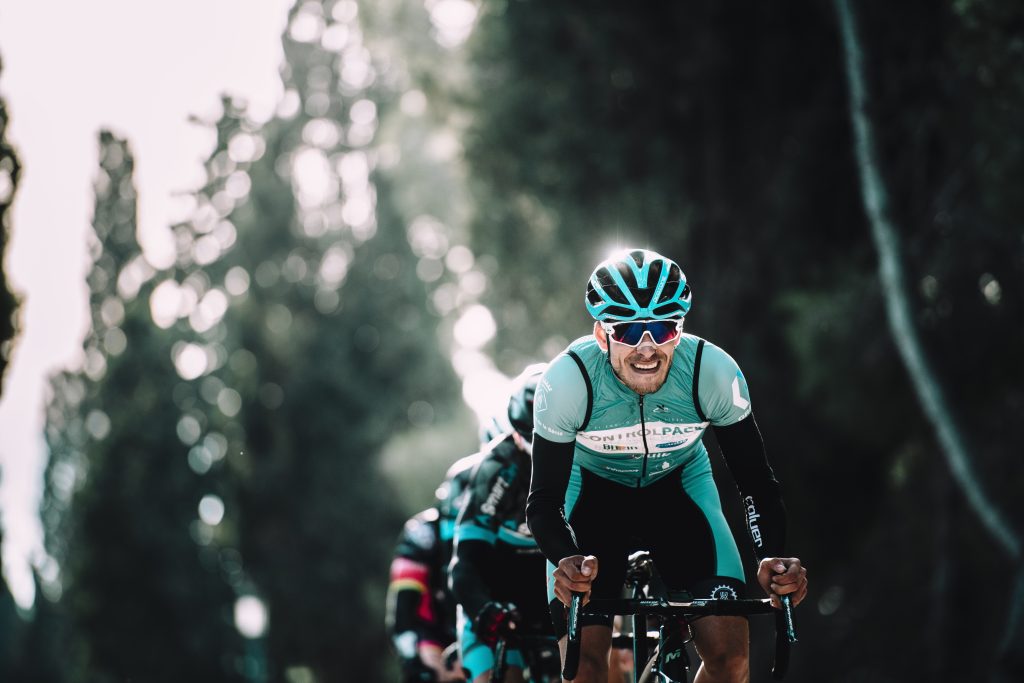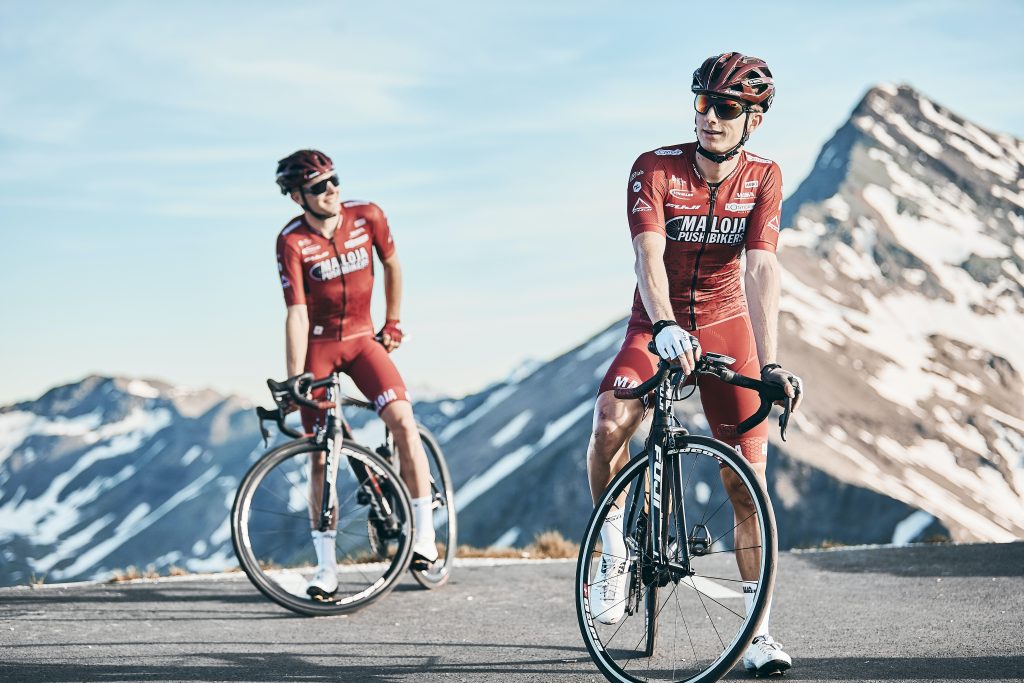So you’ve decided to give cycling a try? That’s fantastic! Whether you’re looking for a new way to stay active, wanting to explore your local trails, or simply wanting to enjoy the freedom of the open road, cycling can be a wonderful hobby to pick up. But where do you even begin? Don’t worry, we’ve got you covered. In this beginner’s guide, we’ll walk you through all the essentials you need to know to get started with cycling, from choosing the right bike to learning basic riding techniques. So hop on, fasten your helmet, and let’s embark on this exciting journey together!
Choosing the Right Bicycle
When it comes to choosing the right bicycle, there are various factors to consider. The first step is to determine the type of bicycle that suits your needs. There are many types of bicycles available, each designed for different purposes. Some common types include road bikes, mountain bikes, hybrid bikes, and city bikes.
Road bikes are ideal for cycling on paved roads and are built for speed and efficiency. Mountain bikes, on the other hand, are made for off-road cycling and are equipped with rugged tires and suspension to handle rough terrains. Hybrid bikes are a combination of road and mountain bikes, making them versatile for both commuting and light trail riding. City bikes are designed for urban cycling, with features like fenders, racks, and comfortable riding positions.
Once you’ve decided on the type of bicycle, it’s important to determine the right size for you. A properly sized bike will ensure comfort and prevent potential injuries. To find the right size, you can refer to the manufacturer’s sizing chart or visit a local bike shop for assistance. Factors such as your height, inseam length, and riding style should be taken into consideration to determine the appropriate frame size.
Considering the terrain you’ll be riding on is also important when choosing a bicycle. If you’re primarily cycling on paved roads and smooth surfaces, a road bike would be suitable. For off-road terrains with trails and uneven surfaces, a mountain bike is the better choice. Hybrid bikes and city bikes are versatile options that can handle a variety of terrains, making them suitable for urban commuting and light trail riding.
Essential Cycling Gear
Before hitting the road, it’s important to have the essential cycling gear to ensure your safety and comfort. One of the most crucial pieces of gear is a helmet. A properly fitted helmet can protect your head in case of a fall or collision. Look for a helmet that meets safety standards and has good ventilation for airflow.
Cycling clothes are designed to enhance your riding experience. Moisture-wicking and breathable fabrics help keep you dry and comfortable during rides. Padded cycling shorts provide cushioning and reduce friction, while cycling jerseys often have pockets to store small items. Consider investing in appropriate clothing for different weather conditions.
Shoes and pedals play a significant role in cycling efficiency. Cycling shoes with a stiff sole can help transfer more power from your legs to the pedals. They also provide better support and reduce the risk of foot fatigue. Clipless pedals can improve pedaling efficiency by allowing you to pull up on the pedals as well as push down.
Gloves offer protection and improve grip on the handlebars. They can help absorb shock and reduce hand fatigue during long rides. Look for gloves with padding in the palm area for added comfort. Eye protection, such as sunglasses or clear glasses, is crucial to shield your eyes from debris, insects, and UV rays.
Having a water bottle and cage attached to your bike is essential for staying hydrated during rides. Dehydration can affect your performance and overall well-being, so it’s important to have easy access to water. Look for a bottle cage that securely holds your water bottle in place, even on bumpy rides.

Understanding Bike Maintenance
To keep your bicycle in optimal condition and ensure a safe and enjoyable riding experience, it’s important to understand basic bike maintenance. This includes regular cleaning and lubricating, checking tire pressure, inspecting brakes, adjusting gears, and repairing a flat tire.
Cleaning your bike regularly helps remove dirt, grime, and debris that can cause damage or affect performance. Use a gentle cleaning solution and a sponge or brush to clean the frame, wheels, and drivetrain. After cleaning, apply lubrication to the chain, derailleurs, and other moving parts to minimize friction and ensure smooth operation.
Checking tire pressure is crucial for maintaining proper traction and reducing the risk of flats. Use a tire pressure gauge to measure the pressure and inflate or deflate as needed according to the recommended range. Inspecting the brake pads and ensuring they make proper contact with the rims or discs is important for safe braking. Adjust or replace brake pads if they are worn out or not functioning properly.
Gears play a vital role in shifting smoothly and efficiently. Regularly check the gear indexing and adjust as needed to ensure precise shifting. Also, keep an eye on the chain and cassette for wear and replace them when necessary. Repairing a flat tire is a basic skill every cyclist should know. Carry a spare tube, tire levers, and a pump to handle punctures and replace a flat tire when needed.
Learning Basic Cycling Skills
As a beginner cyclist, learning basic cycling skills is essential for safety and enjoyment. These skills include mounting and dismounting, balancing, braking, shifting gears, and pedaling technique.
Mounting and dismounting a bike properly is the first step in ensuring a safe ride. Practice getting on and off the bike smoothly, using both feet to balance and stabilize yourself. Balancing is another fundamental skill that comes with practice. Start by practicing in a safe, open area, gradually gaining confidence in your ability to maintain balance.
Braking is an essential skill for controlling your speed and stopping safely. Familiarize yourself with the location and operation of the brake levers on your bike. Practice gradually applying the brakes to get a feel for their responsiveness and stopping power. Shifting gears allows you to maintain a comfortable cadence and adapt to different terrains. Learn how to shift smoothly and anticipate gear changes ahead of time.
Pedaling technique involves applying power evenly throughout the pedal stroke for efficiency. Practice pedaling in a circular motion rather than just pushing down on the pedals. This helps distribute the workload and reduce strain on your muscles. Experiment with different pedaling cadences to find a rhythm that works best for you.

Road Safety and Traffic Rules
To ensure a safe cycling experience on the road, it’s important to prioritize road safety and follow traffic rules. Incorporate these practices into your cycling routine to minimize the risk of accidents and encourage mutual respect between cyclists and motorists.
Wearing high-visibility clothing is crucial for increasing your visibility to other road users. Choose brightly colored clothing or garments with reflective elements to ensure you stand out, especially in low-light conditions. This will make it easier for drivers to spot you and reduce the chance of a collision.
Using hand signals is an effective way to communicate your intentions to other road users. Practice using hand signals for turning, stopping, and changing lanes. Signal in advance and make sure your signals are clear and easily understood by motorists.
Obeying traffic laws is essential for the safety of both yourself and others. Stop at red lights and stop signs, yield to pedestrians, and follow the designated flow of traffic. Remember that as a cyclist, you have the same rights and responsibilities as any other road user.
Riding with traffic is the generally accepted rule for cycling on roads. This ensures that you are moving in the same direction as vehicles and reduces the risk of a collision. Stay in your designated lane and avoid weaving in and out of traffic.
Being alert and predictable is key to maintaining safety on the road. Stay focused, scan your surroundings, and anticipate potential hazards. Avoid sudden movements or swerving, as this can startle motorists and increase the risk of accidents. Ride defensively and assume that other road users may not see you.
Planning Your Cycling Route
When planning your cycling route, there are several factors to consider to ensure an enjoyable and satisfying ride. The distance and terrain of your route are two primary factors that will impact your overall experience.
Consider the distance you are comfortable cycling based on your fitness level and goals. If you are a beginner, start with shorter rides to build up your endurance gradually. As you become more comfortable and confident, gradually increase the distance of your rides. Keep in mind that longer rides require more preparation and energy.
The terrain you choose will also impact the difficulty and enjoyment of your ride. If you prefer a leisurely ride, opt for flatter routes with smooth surfaces. For those seeking more of a challenge, consider routes with hills or off-road trails. Research local cycling routes or use online platforms that provide route suggestions based on your location and preferences.
Choosing scenic paths can greatly enhance your cycling experience. Look for routes that offer picturesque views, natural landscapes, or interesting landmarks. Cycling through scenic areas can make your ride more enjoyable and provide opportunities to explore new places.
Cycling apps or GPS devices can be valuable tools for planning and navigating your routes. These tools can provide turn-by-turn directions, track your distance and speed, and even suggest routes based on specific criteria. Take advantage of these technologies to make your rides more organized and efficient.

Building Cycling Endurance
Building endurance is an important aspect of improving your cycling abilities and achieving your fitness goals. To build endurance, focus on gradually increasing the distance and intensity of your rides.
Start with short rides that match your current fitness level. This could be a few miles or a set amount of time that you feel comfortable with. As you become more comfortable and your fitness improves, slowly increase the distance and duration of your rides. Gradual progress is key to preventing injuries and allowing your body to adapt.
Incorporating interval training into your cycling routine can help boost your endurance. Interval training involves alternating between periods of high-intensity effort and periods of recovery. This can be done by sprinting for a short distance or riding at a high intensity for a set time, followed by a period of slower, easier riding. Repeat this cycle several times during your ride.
Including rest days in your cycling routine is essential for recovery and preventing overuse injuries. Rest days allow your body to repair and rebuild after intense workouts. Listen to your body and give yourself time to rest and recover to avoid burnout or excessive fatigue.
Tracking your progress is a great way to stay motivated and monitor your improvement. Use a cycling computer or smartphone app to track your distance, speed, and other metrics. Create goals for yourself, such as increasing your average speed or conquering a challenging route. Celebrate your achievements and use them as motivation for further progress.
Joining Cycling Communities
Joining cycling communities can enrich your cycling experience and provide opportunities for learning, socializing, and staying motivated. Whether you’re a beginner or experienced cyclist, there are various ways to get involved.
Finding local clubs or groups can connect you with like-minded individuals who share your passion for cycling. These clubs often organize group rides, social events, and workshops. Participating in group rides can improve your skills, introduce you to new routes, and provide a sense of camaraderie.
Community events, such as charity rides or cycling festivals, are great opportunities to meet other cyclists and experience the cycling community firsthand. These events often offer rides of varying distances and difficulties, allowing you to challenge yourself and connect with others who share your interests.
Getting involved in social media cycling communities can connect you with cyclists from around the world. Online platforms and forums provide a space for sharing experiences, asking questions, and seeking advice. Engage with other cyclists, share your own knowledge, and learn from the experiences of others.

Nutrition and Hydration for Cyclists
Proper nutrition and hydration are crucial for maintaining energy levels, promoting recovery, and enhancing performance during cycling. Here are some tips to help you fuel your body effectively:
Maintaining proper hydration is essential for overall health and optimal cycling performance. Drink water regularly throughout the day to stay hydrated. During rides, carry a water bottle with you and sip regularly to replace fluids lost through sweat. Consider adding electrolyte-rich drinks on longer rides to replenish minerals lost during prolonged exertion.
Consuming balanced meals is important to provide your body with the necessary nutrients for cycling. Include a mix of carbohydrates, proteins, and healthy fats in your meals. Carbohydrates provide energy, proteins aid in muscle repair and recovery, and healthy fats help with hormone production and provide long-lasting energy.
Pre-ride and post-ride nutrition can enhance your performance and recovery. Before a ride, consume a meal or snack that is rich in carbohydrates to fuel your muscles. After a ride, replenish your energy stores and aid in recovery by consuming a mix of carbohydrates and proteins. Post-ride snacks or meals that combine these macronutrients can help repair muscles and promote glycogen replenishment.
Carrying snacks on longer rides can help sustain your energy levels and prevent bonking. Choose snacks that are easily digestible and provide a blend of carbohydrates and proteins. Energy bars, bananas, trail mix, or homemade granola bars are all good options. Experiment with different snacks to find what works best for you.
Dealing with Common Cycling Challenges
As a cyclist, you may encounter common challenges that can affect your enjoyment and performance. Here are some tips to overcome these challenges:
Muscle fatigue is a common challenge when cycling long distances or riding at higher intensities. To overcome muscle fatigue, gradually increase your training load and incorporate rest days into your routine. Proper nutrition, including a balanced diet and adequate hydration, can also help prevent muscle fatigue.
Saddle discomfort is another challenge that many cyclists face, especially on longer rides. Choosing the right saddle that matches your body type and riding style is essential. Consider getting a professional bike fit to ensure proper saddle position and alignment. Wearing padded cycling shorts and using chamois cream can also reduce discomfort.
Bike fit issues can affect your comfort and performance. Poor bike fit can lead to discomfort, inefficient pedaling, and increased risk of injuries. If you experience persistent pain or discomfort, consider getting a professional bike fit to address any fit issues and optimize your riding position.
Inclement weather can pose challenges for cyclists, but with proper preparation, it doesn’t have to ruin your ride. Invest in appropriate cycling clothing and gear for different weather conditions. Layering your clothing, wearing a waterproof jacket, and using mudguards can help protect you from rain or cold temperatures. Be cautious when riding in wet conditions, as roads can become slippery.
By being prepared and having the right mindset, you can tackle these challenges and continue to enjoy your cycling journey.
In conclusion, starting your cycling journey as a beginner can be an exciting and rewarding experience. By choosing the right bicycle, investing in essential gear, understanding bike maintenance, learning basic cycling skills, prioritizing road safety, planning your routes, building endurance, joining cycling communities, fueling your body properly, and overcoming common challenges, you can embark on a fulfilling and enjoyable cycling adventure. Remember to take it one step at a time, set achievable goals, and most importantly, have fun exploring the world on two wheels!



